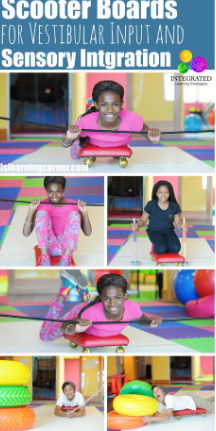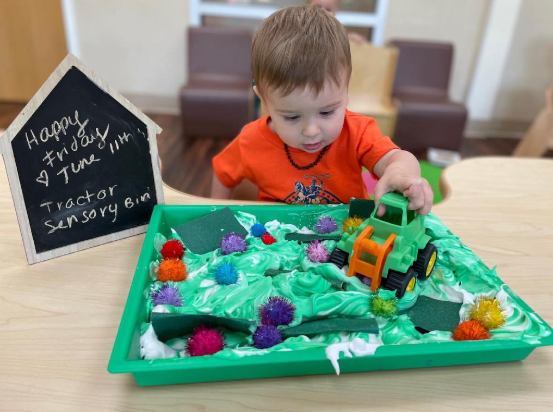What is sensory Integration?
Neurological organization of sensory input to be able to participate in activities of everyday life. Everyone may integrate sensory differently and even integrate each sense differently. Dr. A. Jean Ayres is commonly known for her work in increasing information on sensory integration.

Why does it matter?
It is important to properly integrate sensory information because it allows for increased attention, motor skills, emotional regulation, and increases social skills. If a child is unable to filter out irrelevant sounds then they will likely have trouble listening in class and other areas of their life. The same goes for motor skills. If a child does not have body awareness, then they will likely have trouble with writing activities, sports, and self care skills such as dressing. If a child is not integrating sensory properly, they may also be more likely to be emotionally dysregulated. Lastly, sensory integration helps increase social interaction skills because sensory integration helps people understand social cues.
Using Sensory Integration in the Clinic:
Sensory integration techniques can be used in the clinic to work towards appropriate, adaptive responses to sensory stimuli. Sensory integration can help those with developmental, behavioral and learning deficits. By creating the just right challenge with sensory integration interventions, individuals can work to better integrate sensory based on their specific needs. These activities often involve using vestibular, proprioceptive, auditory and tactile stimuli which help to organize the sensory system.

What are examples of activities?
- Joint compressions for proprioceptive input
- Oral motor exercises for gustatory input
- Ayres sensory integration utilizes more than one sensory system at a time such as utilizing the therapeutic listening program while in an astronaut swing benign bounced.
- Playing with different textures or a sensory bin when in prone on a peanut ball for tactile and proprioceptive input
- Navigating obstacle courses often provide proprioceptive and vestibular input
- Put the child on a yoga ball and move them in a plus sign on the yoga ball which works core and weight shifting through this proprioceptive activity
- Have the child prone on a scooter board, holding onto a rope and pulling themselves across the room. This provides proprioceptive input.
In conclusion, sensory integration is a valuable tool that can be used to help those with sensory difficulties better engage in everyday life.
Resources:
Guardado, K. E. (2023, July 31). Sensory integration. StatPearls [Internet]. https://www.ncbi.nlm.nih.gov/books/NBK559155/
Theradmin. (2024a, June 26). The importance of sensory integration. TheraYouth Foundation Therapy for Children of all Ages. https://therayouth.org/the-importance-of-sensory-integration/


